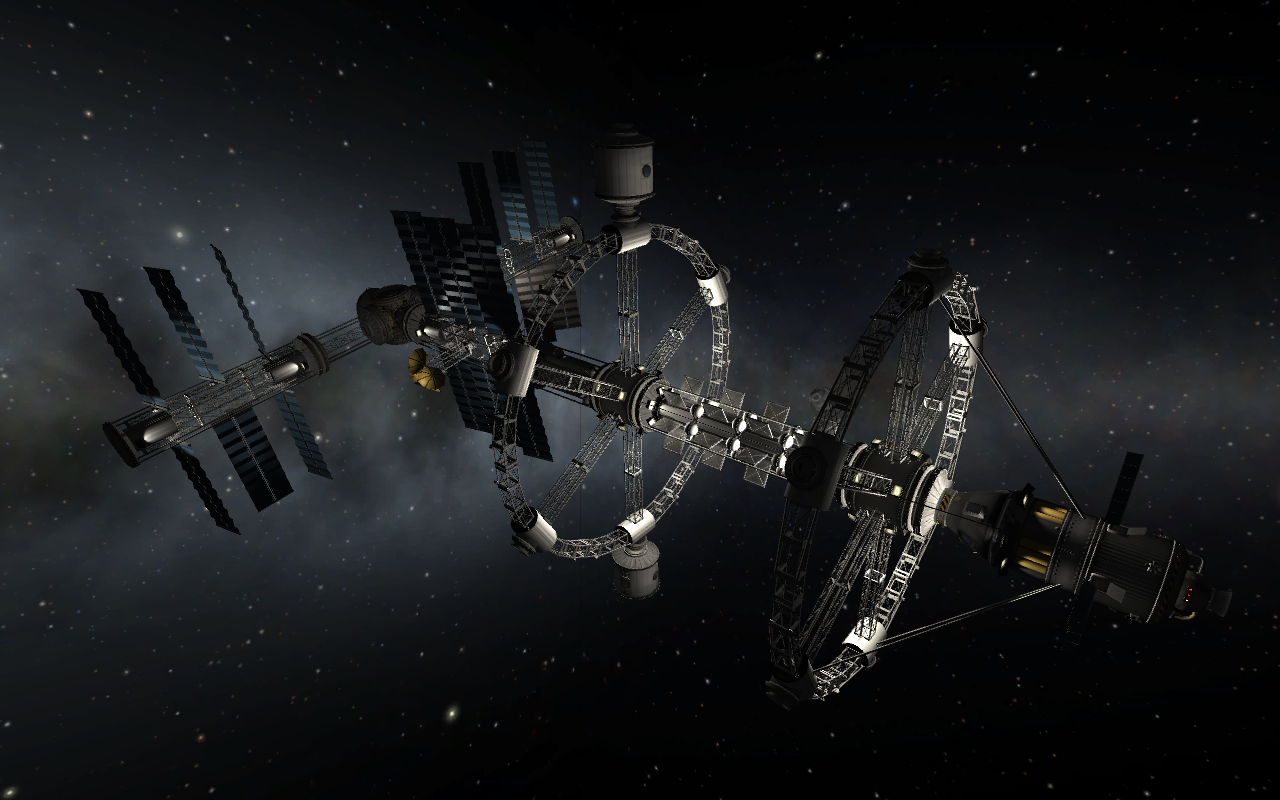

It comes all in one piece, has minimal habitation and no science lab but has a big giant liquid fuel container (which will be filled by mining stations on the surface) to make it easy for ships visiting those planets to refuel for their trip home. This is a "Fuel Depot" station design that I've currently built two of and have en-route to Dres and Eeloo.
KERBAL SPACE PROGRAM SPACE STATIONS FULL
There have also been cases where I felt a full station wasn't necessary but I still wanted a smaller facility for more specialized tasks. You might also want to consider ore storage, but you can also just leave your mining/transport vessel docked with the station while the ore is converted (which is my plan here.) If you want to use your station for mining asteroids it'll need its own ore storage, however. They also need a lot of power, so if you're operating far from the Sun you'll probably need some fuel cells for added juice. Here is the beginnings of a station built along these lines, orbiting Laythe (with a cargo SSTO attached that isn't really relevant to this discussion.) It's important to include adequate cooling with this type of station, since Convert-O-Trons can generate a lot of heat. I do this by replacing one of the Jumbo-64 tanks with a smaller X200-32 and using the extra space to mount a Convert-O-Tron 250. I have a few variants of this design, one of the more common being a station with built-in ISRU capabilities.


The station also includes a command/science module (a Cupola command pod connected to a MPL) and a habitation module (two Hitchhiker containers joined together,) each having a FL-R1 RCS tank for monopropellant storage. Attached to each fuel tank module is a comm/power strut with two Gigantor solar arrays and two RA-100 relay antennas. This module also includes eight Illuminator Mk.2 lights to keep the docking ports visible when on the night-side of a body. docking port on each one.Ĭonnected to the core are two large fuel tank modules each consisting of a Jumbo 64 tank attached to a C7 1.25-2.5 adapter, with four standard-sized Clamp-O-Tron ports on the Jumbo tank and four 1.25 ports on the adapter. It has a central core module consisting of a Rockomax Hubmax with a RC-L01 on one node, a Large Advanced Reaction Wheel on another, Z-4K batteries on the remaining four nodes and a Clamp-O-Tron Sr. Here's my "Standard" station design, in orbit around the Mun. It's not so simple to make two things meet in orbit. Docking two things together is hard though, so you should make sure you're confident before doing that. My most appealing designs tend to come from making something that's functional, which goes for rockets as well. Real space stations are constructed out of (generally) cylindrical sections (called modules), since they are the most convenient shape to get into orbit, and assembled in whichever way makes the most sense. If you wanted to build a space station, it would be easiest to make one that's based off of a real design. Complicated rockets in KSP steal your framerate and make your meticulously crafted rocket turn into a mess of floppy spaghetti. Simplicity and robustness is an Russian engineering philosophy, which is much more kerbal than the American "cutting edge tech and efficiency" method. Trying to simplify rockets is generally a good design principle, and it will cause less headaches in the end. By making the proportions of my stages more realistic looking, my rockets tended to become much simpler and effective than over-staging rockets, or making rockets that looked like a bundle of sausages (the "moar boosters" method). There are some real-life issues that you don't need to worry about in KSP, but real rockets are indeed designed very effectively, so they work well in KSP too. A good thing to do, in my opinion, is to look at real rockets, stations, etc.


 0 kommentar(er)
0 kommentar(er)
